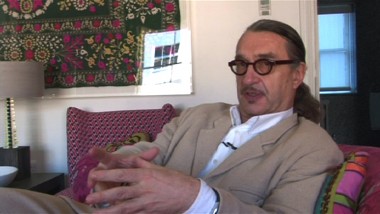| starsza | lista | nowsza |
 The Story of Film: An OdysseyThe Story of Film: An Odyssey
Festival Spotlight
19 lipca 2013
Festival Spotlight - Mark Cousin's 'The Story of Film'
Mark Cousin's 2004 book 'The Story of Film' presented readers with an impressive overview of world cinema history. Through a complex web of parallel narratives, it detailed how innovation in film took place across the globe, highlighting the importance of all national cinemas. The Story of Film: An Odyssey, Cousin’s epic 15-part adaptation, which screens throughout this festival, is an even greater achievement. The series is divided loosely by decade, although from the outset Cousins has us travelling back and forth in time and space, in search of what he believes is true cinema. Shots from one film are mirrored in another made years later. Styles that may have been proscribed to one country are seen to have gestated around the same time in many. And the creative hegemony of Hollywood is frequently called into question. What might have been the final word on cinema's first century for Cousins now seems like the critic’s initial foray into the film essay form. Two other films by Cousins appear in the festival. A Story of Children and Film looks at the pivotal role children have played in cinemas around the world. This time mood, look and emotion take priority over chronology as Cousins navigates his way through films both familiar and obscure. Hollywood is mostly absent, as is animation – the focus not being on films for children, but those about children. What is this Film Called Love? is Cousin’s most informal work. Shot over three days in Mexico, it apparently cost GBP10 to make. Loosely inspired by Soviet director Sergei Eisenstein’s visit to Mexico City over sixty years ago, Cousin’s film transforms into an engaging exploration of solitude and the manifold pleasures of walking. Cinema history is also central to György Pálfi’s hugely entertaining Final Cut: Ladies and Gentlemen. Culled from hundreds of films, Pálfi constructs a single love story, opening with a man waking up and ending with couples embracing. Each stage employs numerous clips across the spectrum of cinema history, albeit featuring mostly western titles and heterosexual-only relationships (the film will hopefully encourage countless alternative readings). At times inspired, such as the brilliant synching of various actresses to Rita Hayworth performing ‘Put the Blame on Mame’, Pálfi’s feature montage underpins the universality of human emotions whilst acknowledging that each of our experiences remain utterly unique. Ian Haydn Smith |
Moje NH
Strona archiwalna 13. edycji (2013 rok)
Przejdź do strony aktualnej edycji festiwalu:
www.nowehoryzonty.pl Nawigator
Lipiec 2013
Szukaj
filmu / reżysera / koncertu
|


















